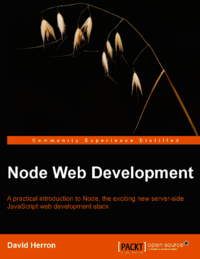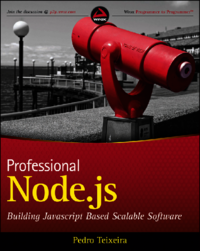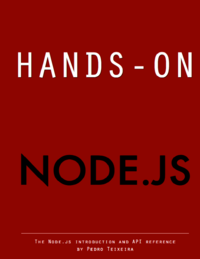Etiqueta "Node"
Se han encontrado 3 Coincidencias
Node Web Development
160 Visitas | 301 Descargas | 2014-04-10 14:43:51 | moliver
Una introducción practica a Node el nuevo stack de desarrollo en java script. Orientado para programadores de todas las edades. A practical introduction to Node, the exciting new server-side JavaScript web development stack

PROFESSIONAL NODE.JS
Programación con Node.js para programadores avanzados.
161 Visitas | 4400 Descargas | 2014-04-10 14:47:06 | moliver
IN 1995, WHEN I WAS IN MY SECOND YEAR IN COLLEGE, I was introduced to UNIX network programming. In C, you could create sockets to open TCP connections to servers and code the servers that accepted these connections. I remember the excitement I felt the fi rst time I created a TCP server: I could accept connections and receive and send messages on them. If I wanted my server to accept many concurrent connections, the common solution was to use threads, and soon I had created my fi rst multi-threaded TCP server. This server accessed a shared data structure, which needed to synchronize the access to all the client threads that had been spawned. Getting the synchronization fi ne-grained (to maximize resources and time) and right (to avoid deadlocks) proved to be more diffi cult than anticipated.

Hands-on Node.js
Hands-on Node.js. Programming on Node.js
135 Visitas | 174 Descargas | 2014-04-10 14:50:48 | moliver
At the European JSConf 2009, a young programmer by the name of Ryan Dahl, introduced a project he had been working on. ?is project was a platform that combining Google’s V8 Javascript engine and an event loop. ?e project then took a different direction from other server-side Javascript platforms: all I/O primitives were event-driven, and there was no way around it. Leveraging the power and simplicity of Javascript, it turned the difficult task of writing asyn?ronous applications into an easy one. Since receiving a standing ovation at the end of his talk, Dahl’s project has been met with unprecedented growth, popularity and adoption. ?e project was named Node.js, now known to developers simply as ‘Node’. Node provides purely evented, non-blo?ing infrastructure for building highly concurrent so?ware.
Contribuir
Usted puede contribuir con Libros UCLV, es importante para nosotros su aporte..
Contribuir